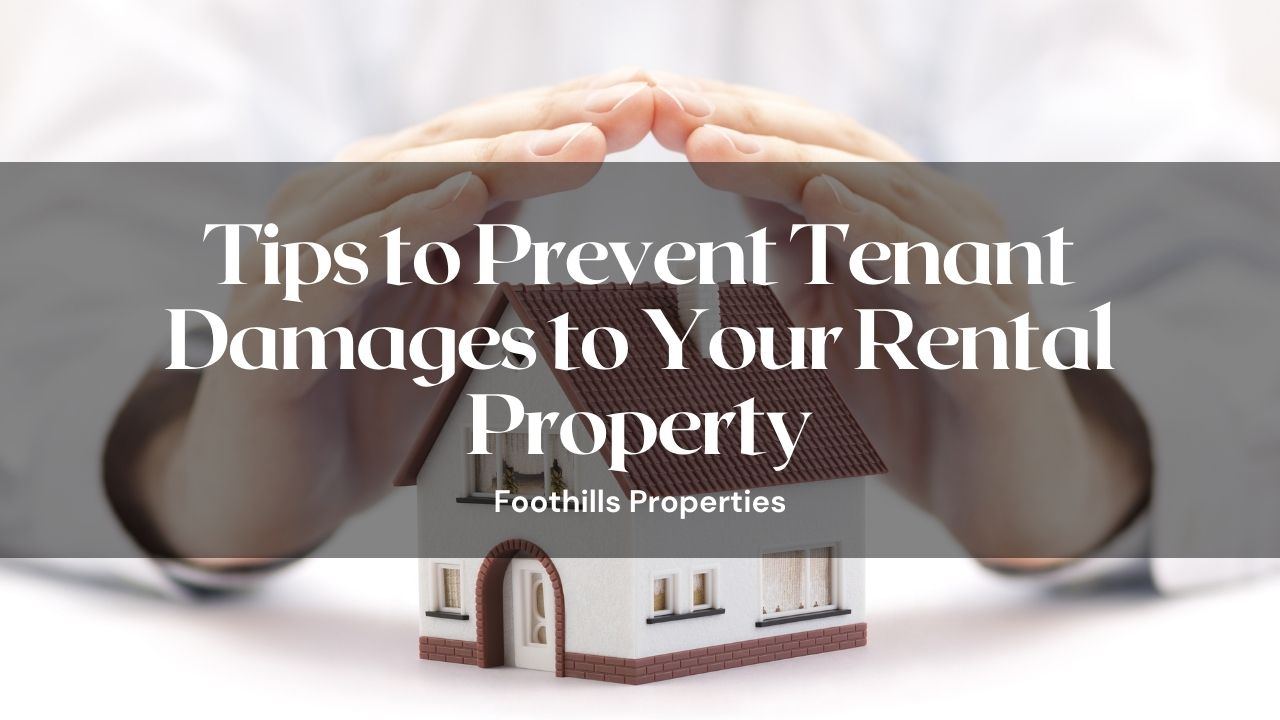
Realistically speaking, landlords must come to terms with the fact that their property will eventually face tenant damages.
When a renter is occupying your property, you can’t expect everything to be as pristine and functional as before. Over time, damages will likely occur on your property.
Knowing this, you should set up contingency plans to limit the risks of damages caused by renters.
This article by Foothills Properties will offer Arizona landlords a few ways to minimize the risk of tenant damages.
Here are some steps you can apply in your rental space.
1. Conduct tenant screening
Screening prospective tenants lets you filter the responsible ones from the problematic ones.
Reaching out to their former landlords also helps you detect patterns.
You can find out whether the renters have committed property damage in the homes they’ve rented before.
You can also uncover the steps they took to remedy the situation.
Aside from that, tenant screening allows landlords to examine a renter’s credit history, employment, and income.
This provides more information on how likely the tenants are to perform their duties like paying the rent on time every month.

2. Create a solid leasing agreement
A well-crafted lease or rental agreement can offer several benefits to you as a landlord.
It protects you from having to deal with future tenant issues like property damage and tenant behavior concerns.
Some renters can be neglectful of their duties to keep the rental home well-maintained.
Others can also fail to follow the property policies outlined in black and white.
Having a leasing agreement guides tenants on their responsibilities and keeps their behavior in check since they’ll know the consequences of their actions.
For example, it’s common for property owners to include restrictions such as not permitting renters to smoke inside the property, grow certain house plants, have more than a certain number of occupants, or bring in pets.
Before signing the leasing agreement, you should discuss the leasing contract in detail and make sure your tenants understand the terms and conditions governing their stay.
3. Practice vigilance during move-in
If you own an unfurnished rental home, your new tenants may bring in a lot of furniture to the property.
It’s likely that incidental property damage, like floor scratches and dents in walls, can happen on the renter’s first day of move-in.
You can stay alert to this common occurrence by planning ahead. Try asking the renters to disassemble large furniture and use a stretch wrap or moving blankets when moving big appliances.
You can also ask them to slow down to prevent as much damage as they can.

4. Be consistent with property inspections
Schedule regular inspections of your rental home. This makes it easy to catch signs of property damage.
Being able to arrange for repairs right away reduces the cost, too.
Landlords should conduct 4 types of inspections, namely:
move-in inspections
move-out inspections
seasonal inspections
drive-by inspections
Ensure that you send your tenant proper notice before inspecting the rental unit.
Property inspections allow you to assess the safety standards and comply with the building and health codes.
The sooner you address issues in these areas, the better it will be for you. Your rental home will retain its value this way.
5. Evaluate which property upgrades to add
Renovations are a big part of increasing the value of your rental home. Investing in improvements can encourage existing tenants to renew their leases.
New renters will also be more likely to sign a leasing agreement with you.
Before taking on property upgrades, check which areas would be beneficial to your renters. Decorative updates may be appreciated, but functional upgrades are more beneficial.
You can choose to purchase energy-efficient appliances, install more security features, or change lower-quality flooring into hardwood flooring for long-term durability.
6. Market a vacant rental immediately
Empty rental homes present a financial loss to landlords.
For one, you need to keep the rental property in peak condition, even without tenants. This means conducting expensive upkeep.
Another area of concern is keeping the vacant rental unit safe. With no occupants, your property can be at risk for trespassers and squatters.
Thus, landlords should conduct frequent visits, ensuring that the access points of the rental are secure.

7. Focus on getting long-term tenants
You can often trust your long-term renters, given the length of the established relationship. Still, don’t expect that long-staying renters can’t commit property damage.
It’s better to have long-term renters you trust than many short-term renters who come and go often. The latter puts you at higher risk for property damages over time.
8. Ask for a security deposit
Security deposits encourage tenants to treat your rental property with more care.
With an incentive to gain back the deposit in full when they move out, they’re far more likely to be cautious and attend to reasonable maintenance of the unit.
Plenty of landlords in Arizona require a security deposit upfront. Potential tenants are unlikely to contest this requirement.
If there are property damages beyond normal wear and tear, landlords can also be assured that a security deposit is available to cover such incidents.
Bottom line
Applying these tips can minimize the tenant damages occurring in your rental home.
You can also opt to hire a trusted property management company to manage tenants and conduct maintenance of your rental unit.
Foothills Properties is dedicated to ensuring that your investment property stays in a top-notch state.
Get in touch with us today at (520) 299 2100!








